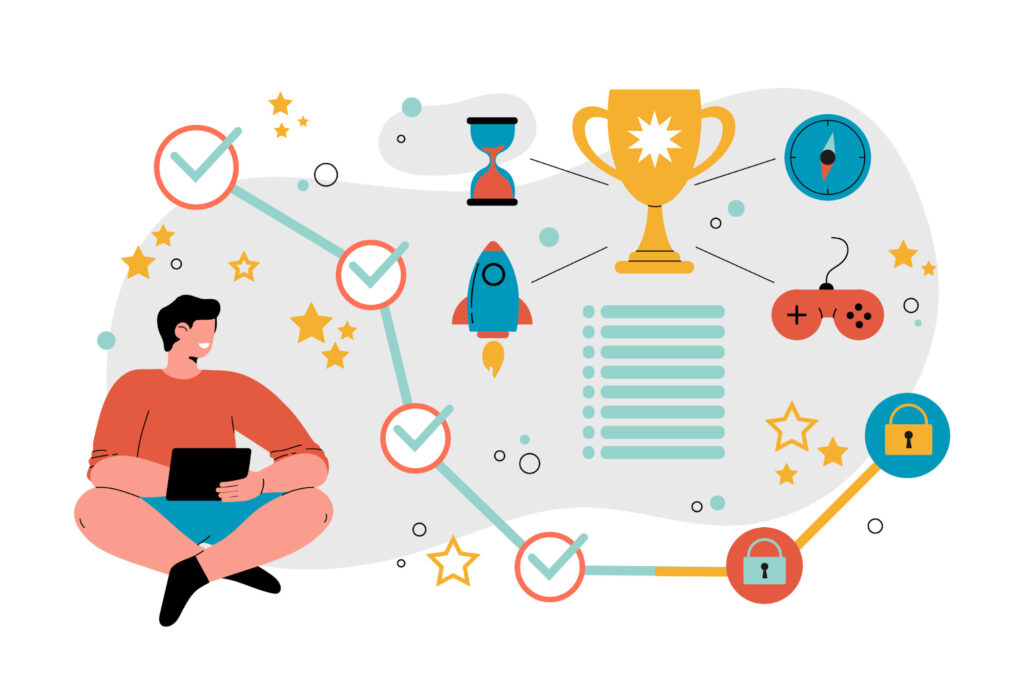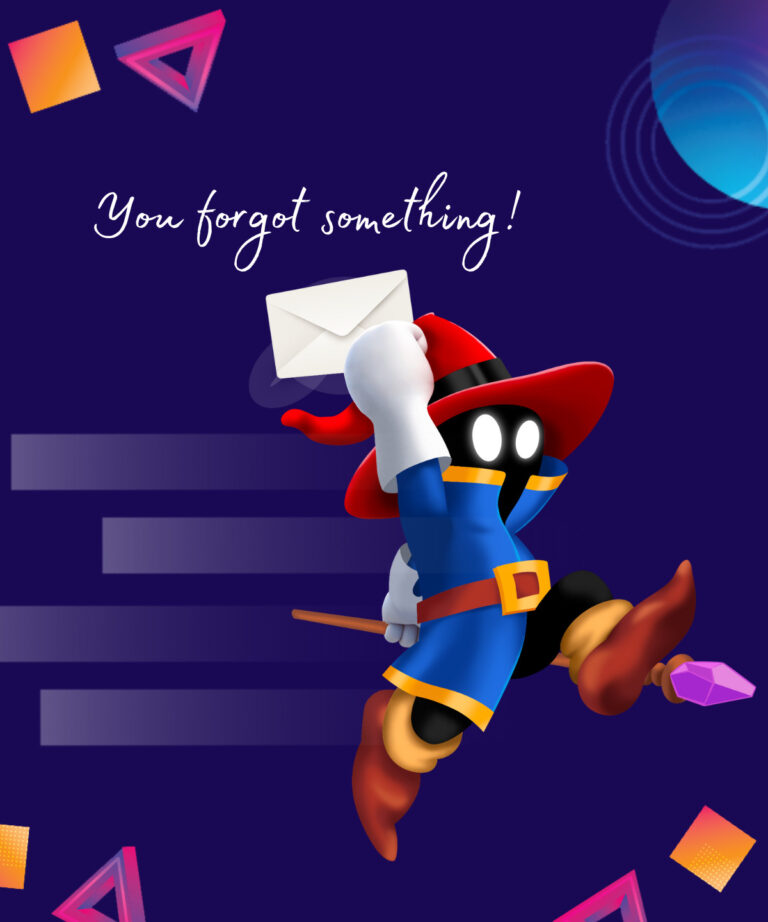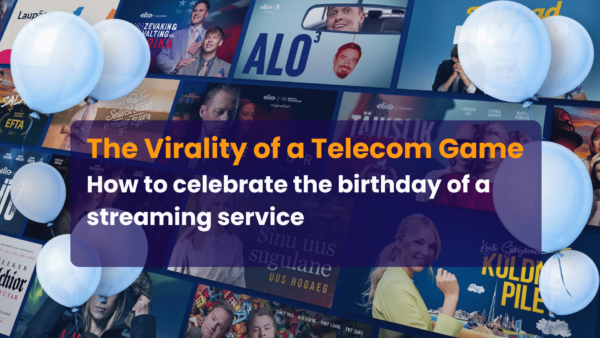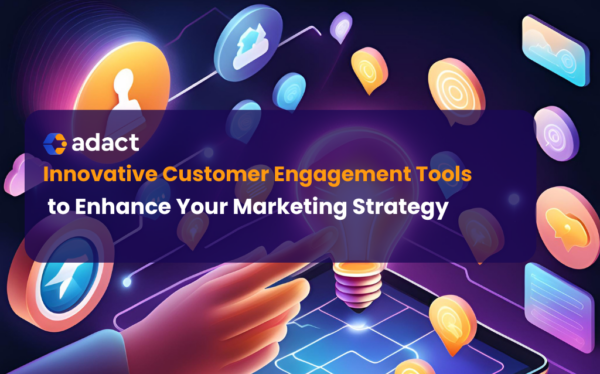Image source: Freepik
Gamification in training can make your entire team more engaged and motivated, ultimately helping you maximize your company’s potential.
But let’s talk numbers. A 2022 study found that gamification largely increases employee training results and overall office performance. It can help increase the number of clients by over 16% and the collected fees by almost 40%.
The idea of making learning fun has been around since the 1990s but was never as popular as in the last couple of years. New software like Adact for implementing game mechanics into workplace training, eLearning and even marketing makes it easier than ever to tap into those benefits.
What is gamification in training?
Gamification is adding game mechanics to things that typically don’t have them. With modern technology’s evolution, many companies shift from transforming routine training and tedious tasks into rich, fun experiences.
In the case of corporate training programs, such gamification elements could include points, leaderboards, badges, levels etc. This keeps employees engaged and motivated while also improving the effectiveness of the learning process.
Gamification in corporate training: Benefits
A study performed by KPMG in 24 offices among employees working directly with clients showed that gamified training delivered impressive results:
- 25% increase in fees collected
- 16% increase in the number of acquired clients
- Opportunities from new clients rose by 22%
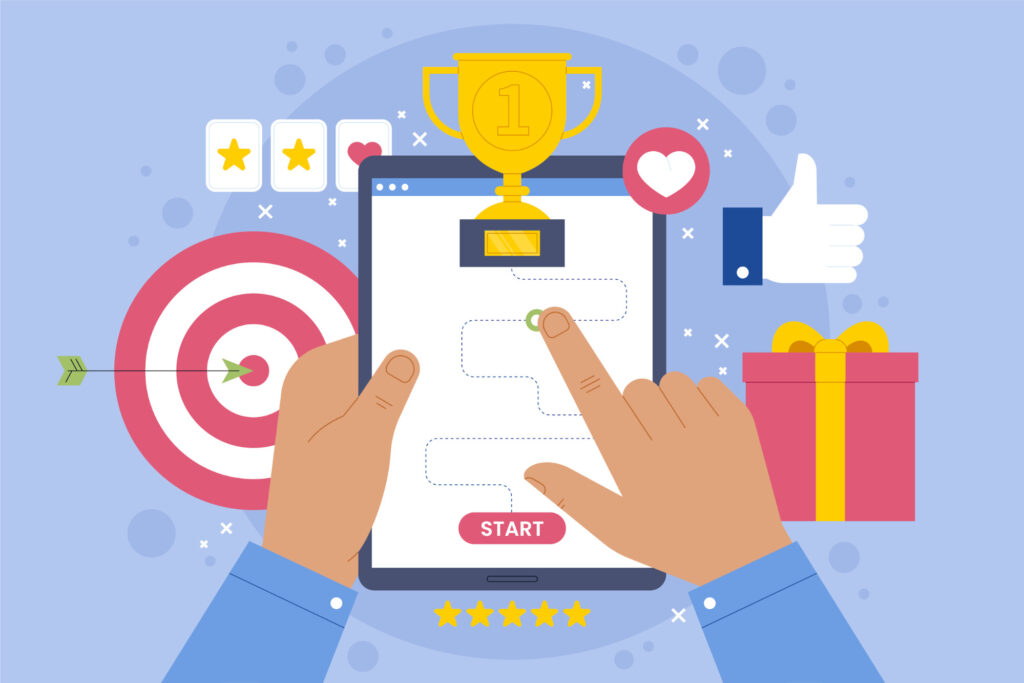
Image source: Freepik
Some additional benefits you can expect from interactive employee training include:
- Increased information retention – gamification in training makes the learning path more interactive and immersive. Content presented in a game-like format creates a more memorable experience, making it easier for learners to recall the acquired information and boosting knowledge retention.
- Learner engagement – traditional training programs are often simply quite dull. Studies have shown that gaming elements in the training process effectively enhance employee engagement, interest and participation. This is especially important in a world where 49% of people have shorter-than-ever attention spans.
- Motivation – gamification in workplace training taps into the motivational mechanisms of individuals by providing clear goals, challenges and rewards. Unlocking new levels or content and fulfilling achievements gives a sense of progress and accomplishment, increasing the willingness to learn.
- Instant feedback – gamification software usually includes a feedback loop that helps participants identify their own strengths and weaknesses. Hence, they know exactly what to focus on to improve. An online learning platform can also be a valuable real-time performance indicator for company managers and leaders.
- Fun company culture – friendly competition and an atmosphere of lighthearted fun can have a positive ripple effect on office morale and employee satisfaction.
- Social learning – gamification in training initiatives can also improve team building, communication and collaboration skills among your team. To help foster relationships, you can include team challenges, discussion forums and chats, leaderboards etc.
How can you use gamification in training courses?
You can use gamification pretty much in any training module. Here are some ideas for incorporating game elements into workplace learning.
Onboarding training
New employees need as much encouragement and engagement as possible. You should show them that your company is a great, welcoming place to work. A ton of information needs to be learned at this stage, so focus on not making it overwhelming.
A great option to make this stressful time easier and more fun is using a Video Trivia questionnaire. This type of multimedia content boosts comprehension rates by three-six times compared to traditional training. It’s a great way to include more information about the workplace.
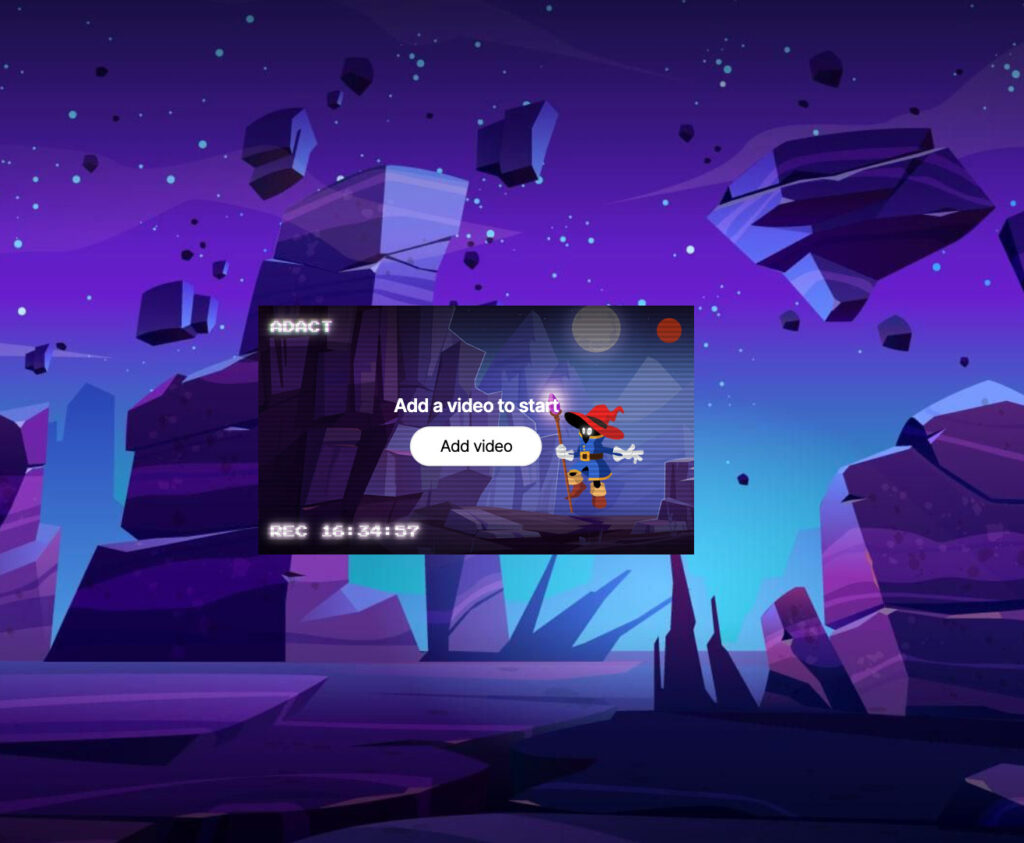
Start by showing participants a short training video, and then include some multiple-choice questions about the video to check their comprehension and information retention.
See also: 12 fun ways to introduce new team members
Compliance training
There’s no way around it – compliance training is quite possibly the most challenging and tedious module on the learning path of any organization. It would seem there’s no fun way to teach anyone about regulations, guidelines or laws.
In this case, you don’t want to overcomplicate the training experience with more text and long questions. A simple way to make this process more dynamic is using a Swipe poll – a more engaging and visual alternative to boring yes/no questions. The interface is very similar to dating apps – users simply swipe right for “true” and left for “false”.
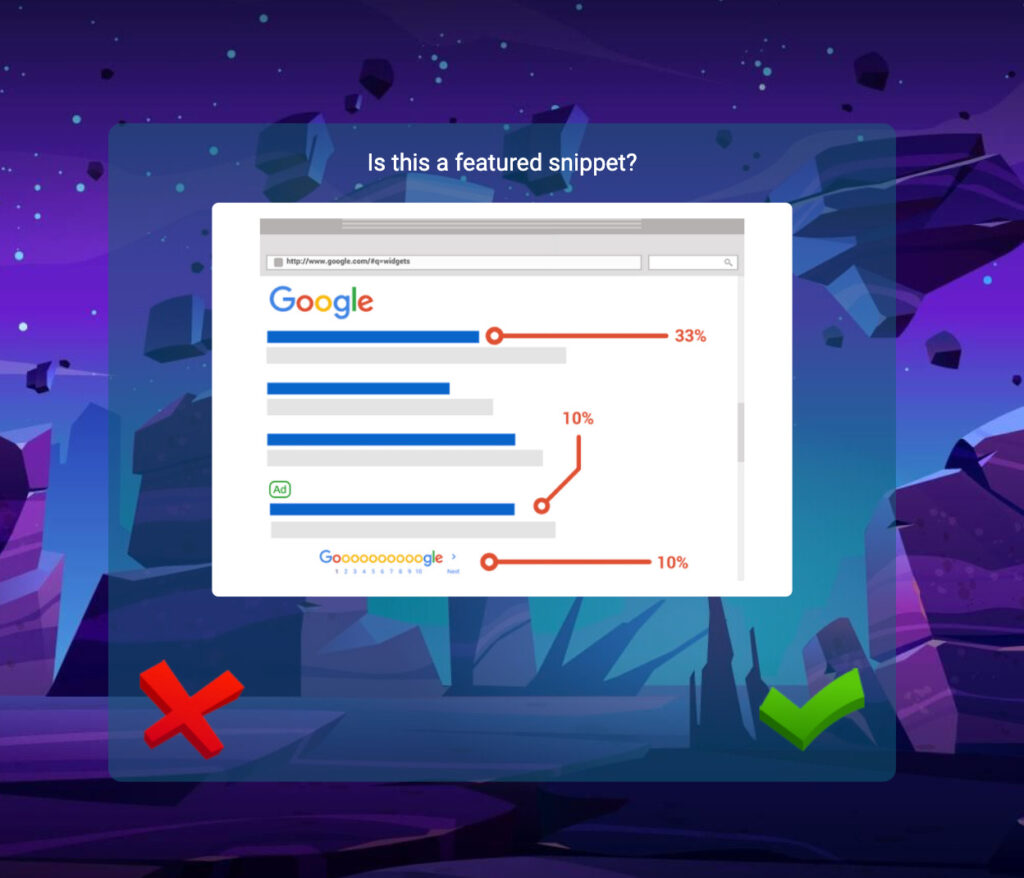
Alternatively, you can opt for a somewhat similar Battle game. It serves as a quick, dopamine-boosting knowledge check, where participants choose one correct answer among two or more options.

Leadership training
Provide your leaders with a training platform that’s a fun way of leveling up and a gamified way to expand their skills – and they will respond in kind. There are many options you could go for, but one we recommend is a multi-choice trivia game. You can make it multiplayer and add a leaderboard and chatroom to create a competitive, knowledge-sharing environment.
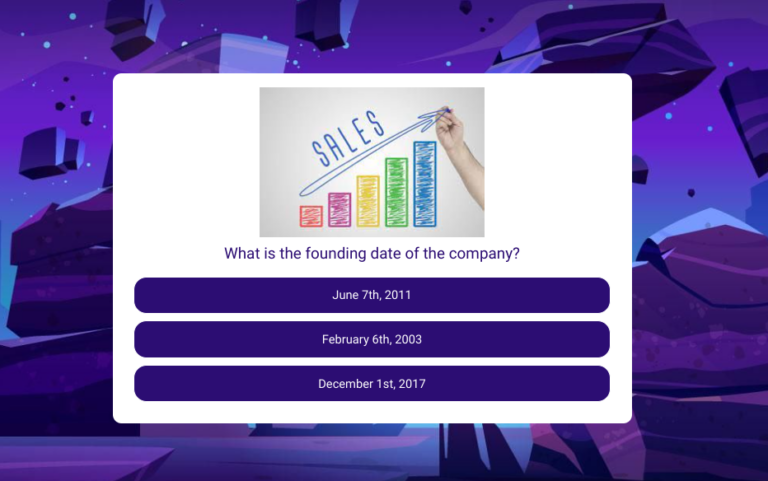
Here are some question types you can use:
- What does the acronym SMART stand for in goal setting?
a) Specific, Measurable, Achievable, Realistic, Tangible
b) Strategic, Meaningful, Attainable, Relevant, Timely
c) Specific, Measurable, Attainable, Relevant, Time-bound (Correct)
d) Successful, Meaningful, Actionable, Results-oriented, Timely
- Which leadership style promotes open communication and involvement of team members in decision-making?
a) Autocratic leadership
b) Laissez-faire leadership
c) Democratic leadership (Correct)
d) Transactional leadership
Sales training
Ever heard of the television game show Jeopardy? Of course, you have – it’s been around since the 1960s and even now has over nine million weekly viewers, making it the second most-watched entertainment TV show. Adact makes it easy to use this well-known and widely beloved format to boost training engagement and effectiveness.

One company that has already used this option to effectively increase employee engagement and motivation is Kaupmees & KO.

The Jeopardy format has three categories and three questions for each of them. Edit these to fit your brand and goals. The questions should be in the form of answers. In turn, the answers are in the form of questions, so the options could be as follows:
- This sales technique involves asking open-ended questions to uncover customer needs.
a) What is consultative selling? (Correct)
b) What is upselling?
c) What is relationship selling? - This strategy focuses on building long-term relationships with customers to encourage repeat business.
a) What is account management? (Correct)
b) What is cold calling?
c) What is lead nurturing?
For 40+ more Jeopardy trivia questions, visit our blog post.
New software training
If your current training objectives include memorizing a lot of information and terminology, a custom Wordle game is the way to go. This is the perfect gamification strategy for implementing new software or employee rebranding.
The rules are simple enough to follow – the learner has to correctly guess the word or phrase by selecting individual letters.
- The box turns green if they pick the correct one and place it in the right spot.
- The box turns yellow if they put the correct letter in the wrong box.
- The box turns gray if they pick an incorrect letter.

To make it more competitive and exciting, add a leaderboard. When employees earn points, their total will be publically visible and compared to everyone else on the team. This will turn learning new skills into an engaging contest, encouraging employees to spend more time on the necessary training.

Gamification in training: How to implement it
Set goals
Start by identifying clear goals and learning objectives for your training course. Determine what specific skills or knowledge you want to develop in your employees through gamified training. This will give you a sense of direction and help shape the overall design and implementation of the particular game elements.
For example, a Wheel of Fortune or Scratch card may be great to put on your landing page, but they don’t effectively aid in education.
Choose a gamification software
The gamification platform you choose should be easy to use and provide customization options, integration capabilities and the ability to track and analyze learner progress.
One option that does it all is Adact – the world’s leading software for creating fully customizable interactive experiences. The zero code structure is its greatest asset, meaning that you don’t need any developer knowledge to create gamified training programs and achieve ground-breaking results.
It’s worth noting that Adact isn’t just for corporate training programs. There are plenty of game options that you can use to create raffles, competitions and engaging games to use in your trendy marketing strategy.

Choose your game type
Determine the type of game that aligns with your training goals and audience. Some common educational game types that Adact offers include:
Consider your training program’s content and learning objectives and choose a game type that enhances learner engagement and reinforces the skills or knowledge you want to promote.
Add a leaderboard to inspire healthy competition
A leaderboard displays the progress and performance of participants, motivating them to outperform their peers. This can be a great way to encourage employees to spend more time on the training sessions and keep improving.
Ensure the leaderboard is transparent and visible to everyone. Consider incorporating rewards or recognition for top performers to further fuel motivation. With Adact, you can add a leaderboard to any game and it will be constantly automatically updated.

Ask for feedback on the training
Encourage participants to provide feedback on the gamified training experience. You can do this through gamified surveys, evaluations or discussion forums. Gather insights on the effectiveness of the gamification elements, the clarity of instructions and the overall learning experience.
Use this feedback to improve and refine the gamified training for the future. Adact also comes with data collection and analysis options. Based on this combined information, you can keep improving your training courses to ensure they always meet learners’ needs.
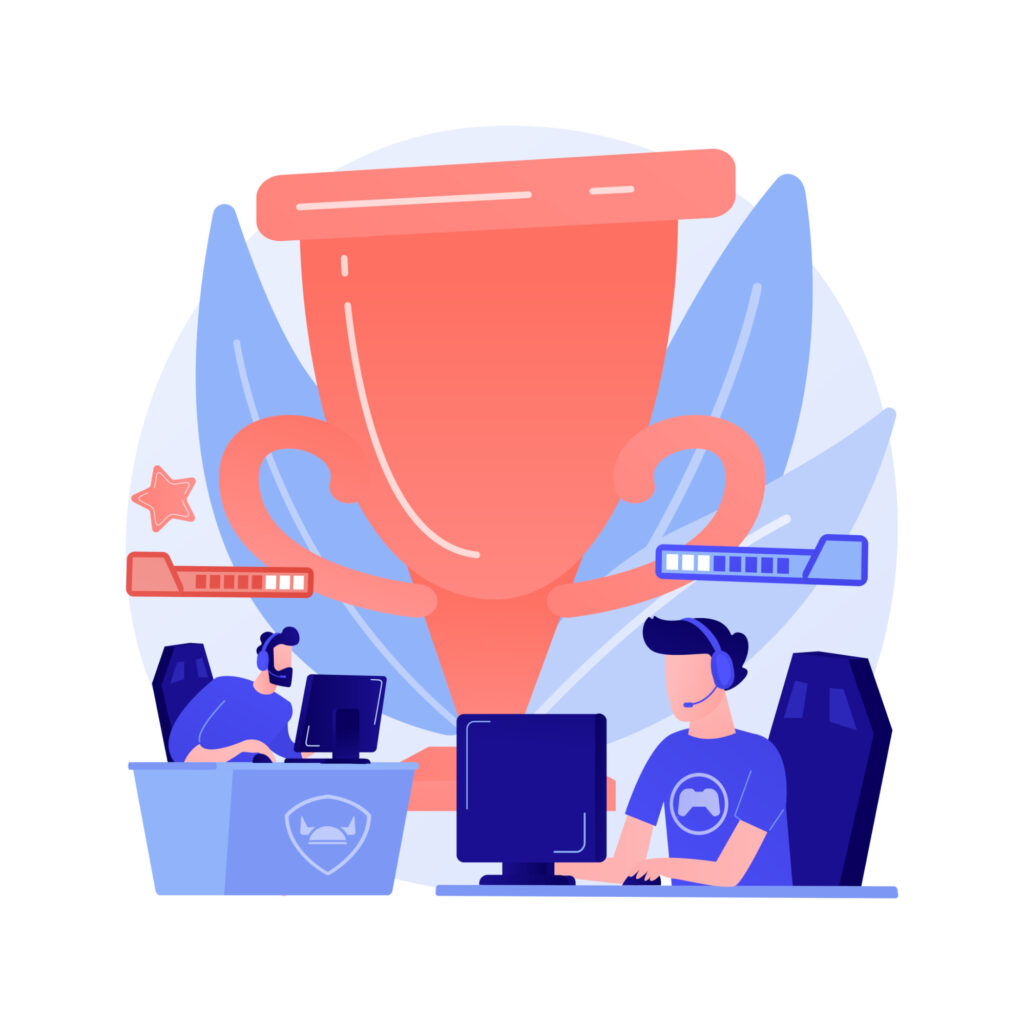
Image source: Freepik
Conclusion
By now, you should have a pretty good idea of how you can implement game mechanics into your corporate learning platform. Make sure to pick the game type that best suits your current goals and the needs of each team.
With Adact, you can set up a new gamified training program in minutes, complete with your branding, multimedia and personalized questions. With its code-free, drag-and-drop interface, there’s no need to learn the intricacies of challenging game mechanics. And you can choose from dozens of game types to fit your strategy.
Sign up for a free preview to see how your organization can profit from gamification in training.
Gamification in training: FAQs
Yes, numerous studies and real-world implementations of game elements in training scenarios have shown a positive impact on learning outcomes and employee growth.
Many companies decide to implement gamification in their training environment. It has been shown to effectively engage users, increase motivation, improve knowledge retention, provide immediate feedback, boost cooperation and morale and even bridge the gap between theory and practice through simulations and interactive challenges.
Despite its many benefits, gamification training doesn’t come without its drawbacks. These include:
– Design and implementation complexity – although Adact allows you to create a gamified learning program with zero code
– Alignment and integration with training and business objectives
– Maintenance and updates to retain engagement
– Participants focusing on the wrong aspects of training sessions with an inability to implement knowledge into real-life scenarios
– Individual differences and preferences
– Technology requirements and access
When done right, game-like elements provide extrinsic motivators that enhance engagement and drive performance. Motivating aspects include clear goals and objectives, a sense of progress and achievement, digital or real-world rewards, incentives and reinforcement of positive learning patterns.
Successful gamification in training efforts yields better focus. This helps employees identify business objectives and have a higher understanding of the brand and their role in it. Interactive lessons with real-time feedback and reinforcement boost training effectiveness and make the process very personalized, speeding up the professional development of each teammate.
